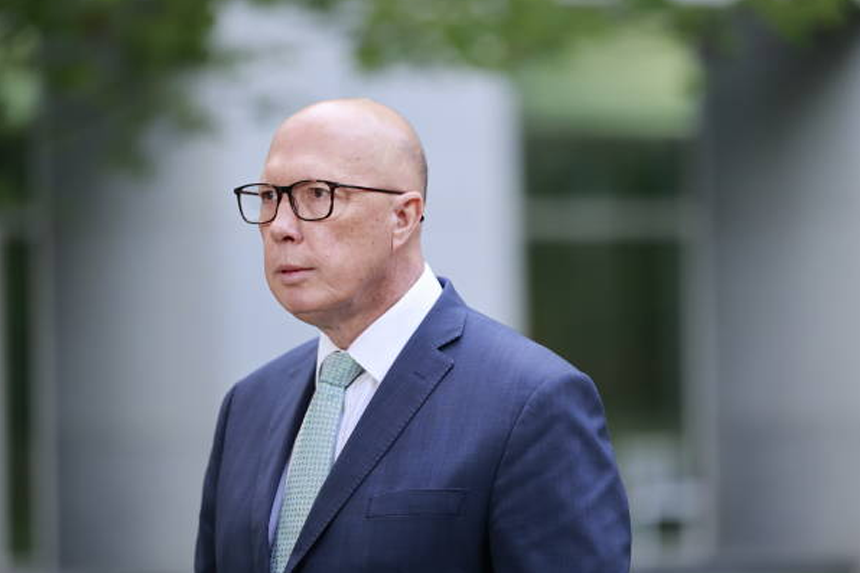After a major outcry, Peter Dutton, leader of Australia’s opposition Liberal-National Coalition, has changed his stance on eliminating work-from-home possibilities for public servants. Just a few weeks before the Australian general election, set for May 3, this about-face originally suggesting to cut work-from-home choices in line with a larger public sector efficiency plan, Dutton said the Coalition had “made a mistake” and apologized for the idea. The adjustment followed strong criticism directed at government officials, public service unions, and the general public.
- Describe the original policy proposal?
- Why did critics of the policy object?
- How did Dutton handle the criticism?
- How has the Coalition responded to public service job cut criticism?
- How has the Labor Government responded to the reversal in policies?
- In what way does this policy change fit world trends?
- What Does This Suggest Regarding the Next Election?
This change in posture reflects the difficulties political leaders have in developing policies that appeal to people, particularly considering growing cost-of-living issues and the increasing relevance of flexible work schedules. The reversal also emphasizes the difficulties of running a varied workforce and juggling staff requirements with more general financial objectives.
Describe the original policy proposal?
The Liberal-National Coalition first suggested a program within a bigger package meant to shrink the Australian public service’s scope and increase efficiency. Targeting 41,000 positions—which would be accomplished over five years—the proposal includes notable reductions to public service employment. The suggestion also advised public servants—especially those in Canberra, where a sizable fraction of Australia’s federal workforce is based—to end their work-from-home agreements.
This approach was presented as a means of increasing output and simplifying government processes. The Coalition contended that mandating staff members to spend full-time in the office would boost public service efficiency, accountability, and cooperation. Furthermore, the program was presented as a required action in tackling the financial difficulties the COVID-19 epidemic presented, which had resulted in a notable public sector expenditure rise.
Still, the proposal’s work-from–home element soon turned into the main cause of debate. Critics—including labor unions, several women’s rights organizations, and the current Labor government—argued that this approach would disproportionately hurt women. Many women, especially those who have caring obligations, depend on the freedom of working from home to juggle their personal and professional life. Stopping these agreements would have forced people to decide between family responsibilities and their jobs, critics cautioned.
Why did critics of the policy object?
The opposition to the work-from– home policy was quick and broad. Employment Minister Murray Watt and other labor government members denounced the measure as a retreat in the continuous fight for workplace justice. Watt claimed that the program not only lacked relevance for the demands of contemporary workers but also might be detrimental to women already confronting major difficulties in the employment.
“The policy shows a complete lack of knowledge of how people, especially women, balance work and life,” Watt remarked in a statement. “This approach runs the risk of reversing years of advancement in enhancing workplace equality and flexibility.”
Apart from issues on gender equality, public service unions also objected to the strategy. Representing Australian public sector employees, the Public Service Association (PSA) contended that cutting work-from-home policies would lower staff morale and output. The union noted that many public servants had effectively adjusted to remote work during the COVID-19 epidemic and that keeping flexible working alternatives had become increasingly important in drawing in and keeping qualified employees.
A more general worry was the possible effect on staff welfare. Maintaining a good work-life balance has many employees said depends on their ability to work from home. Working from home lets some people create a more reasonable daily schedule, therefore lowering the stress and cost of travel.
How did Dutton handle the criticism?
Under increasing pressure, Peter Dutton seemed to change his former stance. He convened a press conference on Monday to openly admit the shortcomings of the approach. “We got it wrong and we have apologised for it,” Dutton said, acknowledging that the Coalition miscalculated the consequences of the program on Australian workers, especially women.
Dutton also stressed that the policy was meant to apply just to public officials in Canberra, not to the larger public service workforce. Using what he called a “smear campaign,” which portrayed the Coalition as assaulting workers’ rights on a national level, he charged the Labor administration of distorting the policy. The justification, however, did not satisfy many detractors who pointed out that the consequences of the policy would have been seen outside of Canberra, particularly in a post-pandemic environment where remote work has grown increasingly ingrained.
Jane Hume, the shadow finance minister, also addressed the matter stressing that the Coalition will now drop its plan to eliminate work-from–home arrangements after learning from the criticism. “We have listened and we understand that part of getting the best out of any workforce is flexible work—including work from home,” she said in a statement.
Hume’s remarks signalled a significant change in Coalition policy, indicating a more adaptable attitude on working conditions. Although the Coalition had first concentrated on restricting remote labor, they now seemed to recognize the need for flexibility in modern businesses, particularly given the epidemic.
How has the Coalition responded to public service job cut criticism?
Apart from the work-from- home policy, the Coalition’s plan to reduce 41,000 public service employment had also come under criticism. The party had been under pressure to specify exactly where the job losses will take place and whether forced layoffs would be included. Further increasing public sector employees’ worries, several influential party members had hinted that forced layoffs could be included into the strategy.
On Monday, Jane Hume clarified further by saying the employment losses will not include forced layoffs. Rather, the Coalition would like to reach the cut in public service roles using a hiring ban and natural attrition spanning five years. “We have always planned to sensibly shrink the size of the public service over time; we have never stated there would be forced redundancies,” Hume said.
Dutton seems to contradict Hume’s remarks even with this explanation. He stated, implying that the Coalition was adjusting its strategy, “We got the policy wrong in that regard, and we have made it clear, now, our position.” The contradicting claims have further muddled the Coalition’s more general ideas for public service reform.
How has the Labor Government responded to the reversal in policies?
Quick to seize the Coalition’s policy change, the Labor administration Murray Watt, the minister of employment, attacked Dutton’s reversal of stance, saying it exposed the lack of consistency and leadership of the opposition leader. “This simply shows Peter Dutton is all over the shop,” Watt remarked. “He is working to provide himself the worst facelift in Australian history.”
“The problem for him is that he can change what he says, but he can’t change who he is,” Watt further said, arguing that Dutton’s attempt to backtrack on his position would not alter the fundamental issue. This sharp attack implies that, in the run-up to the election, the Labor government will keep emphasizing Dutton’s policy reversals as a main component of its campaign plan.
In what way does this policy change fit world trends?
Australia’s work-from—-home policy is being reversed at a time when many governments and businesses worldwide are debating the direction remote work is headed. For instance, President Donald Trump signed an executive order mandating federal employees in the United States to return to the workplace full-time, while big companies like Amazon have enforced comparable requirements.
Still, these rules have run across opposition. Surveys reveal that many employees want to work from home at least part of the time; many workers have become used to the freedom of remote work. For some, especially those with caring obligations, the option to work remotely has been essential in helping them to manage their personal life.
Polling data from Australia reveals that voters’ top concern right now is the cost of living. Many employees thus see the option to work from home as a crucial means to lower the emotional and financial burden of commuting.
What Does This Suggest Regarding the Next Election?
Peter Dutton’s apologies and policy flip as Australia gets ready for the May 3 vote might have big effects on the result. Voters will have to be persuaded by the Coalition that it is dedicated to preserving workplace flexibility—especially in the public service. Simultaneously, the Labor administration is probably going to keep using the Coalition’s policy revisions as a critique of Dutton’s leadership.
The future of Australia’s workforce—including the mix between in-office and remote work—will probably remain a major electoral topic. Though it remains to be seen whether reversing the work-from-home policy will be sufficient to influence undecided voters, workplace flexibility has certainly grown to be a major concern for Australian employees.







